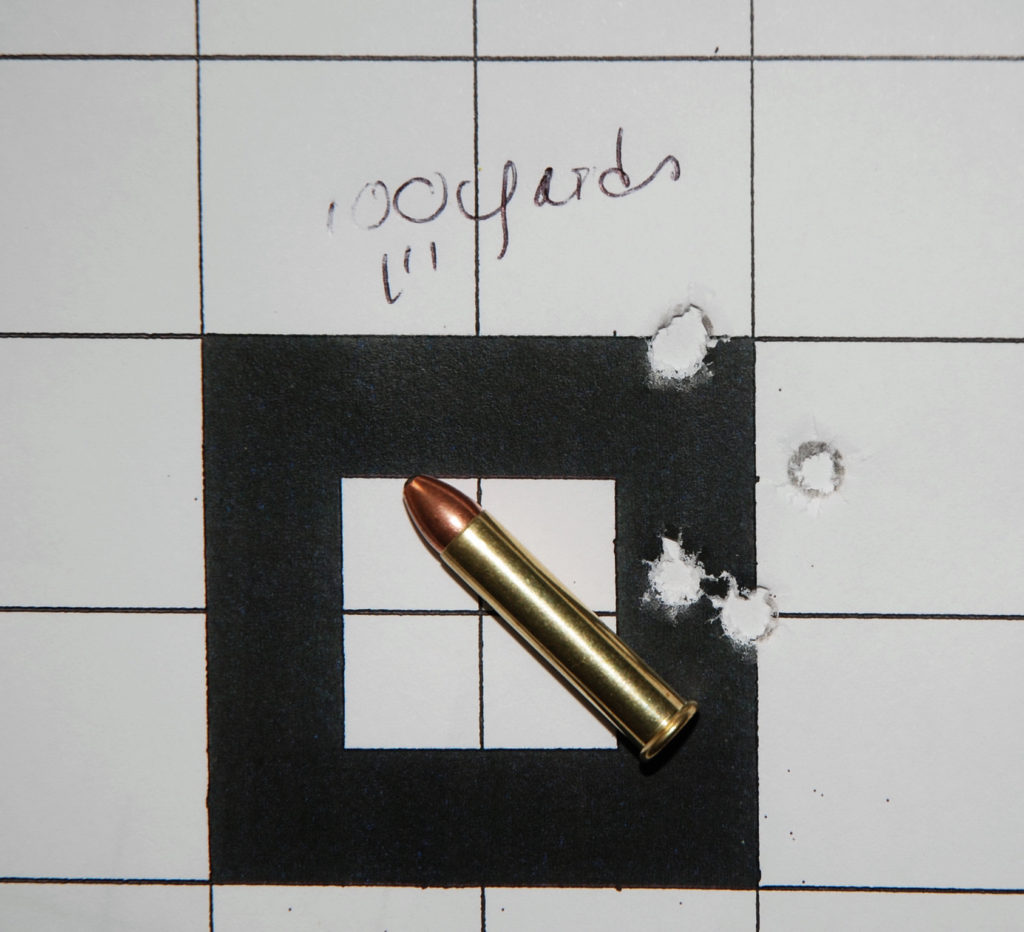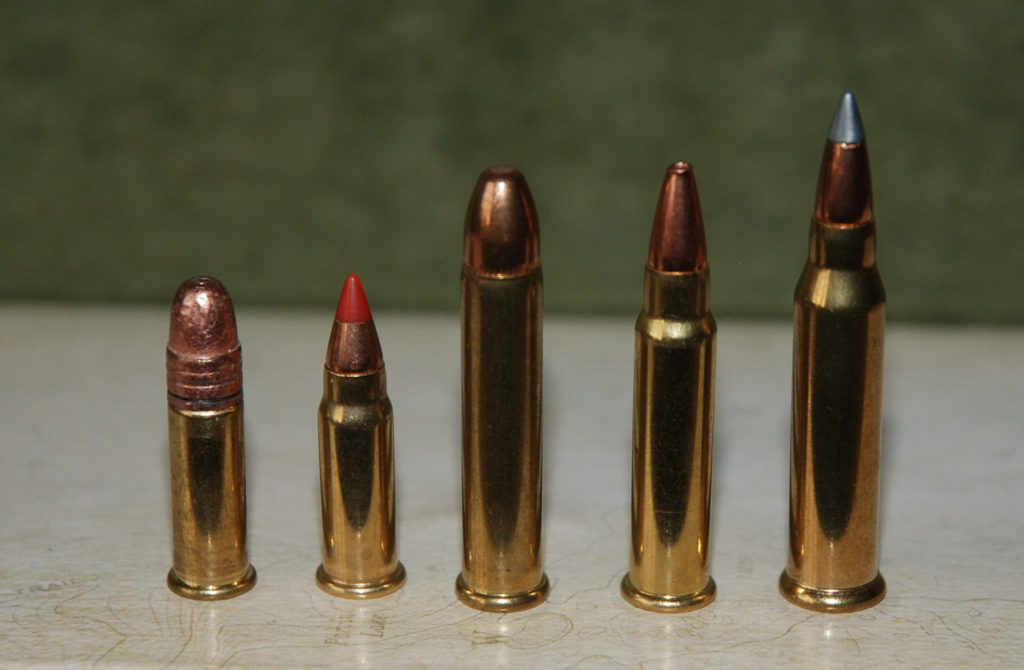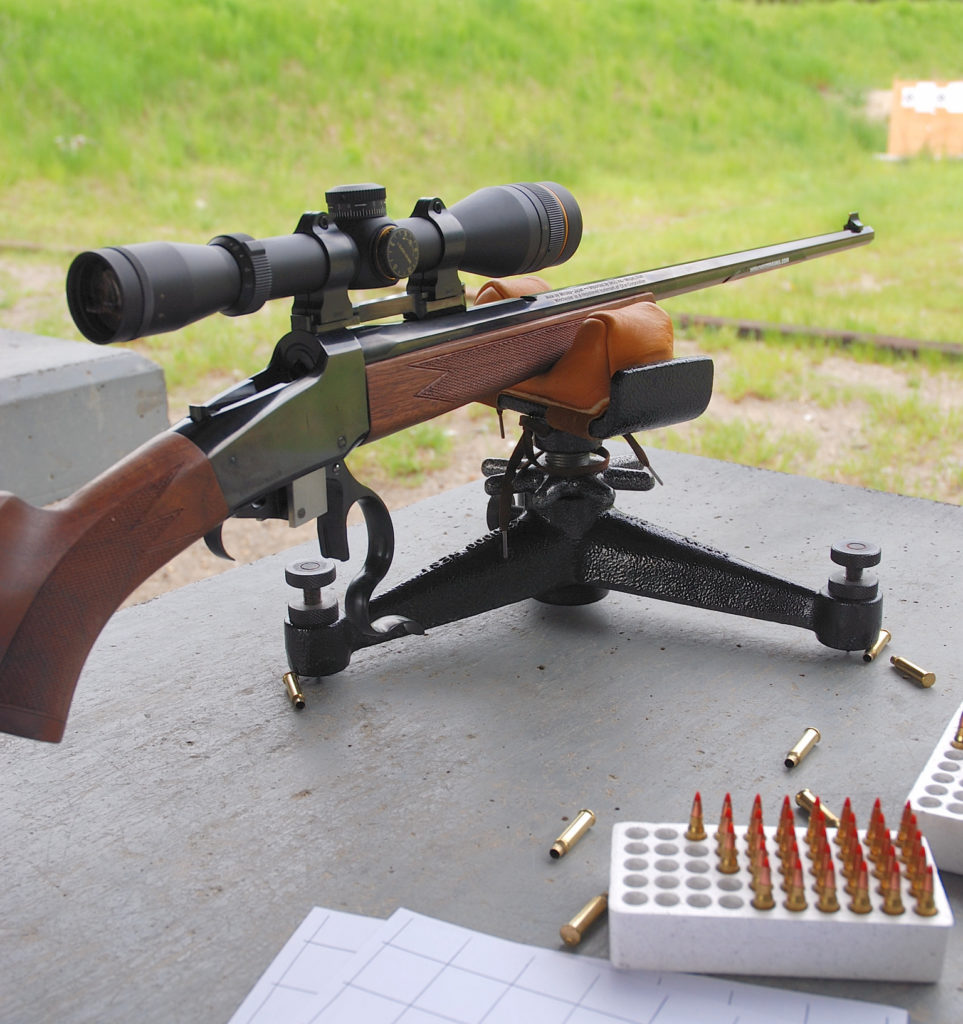Much has been written about one of my favorite cartridges, the .22 rimfire, and I include myself in that parade of authorship. Since its inception, this little cartridge has not lost any momentum either, as more ammunition is sold for it today than any other.
Advertisement

Despite its resounding popularity, there is another entire realm of rimfire cartridges that collectively raise the bar on velocity, lethality and longer-range performance. Why the lack of attention? I’m not sure, as they fill the gap between the .22 LR and any number of small calibre centrefire cartridges, and they do so at considerably less cost. For example, a well-known sporting goods outlet offers a box of 50 .17 Winchester Super Magnum cartridges for $17.99 US as compared to $29.99 US for a box of 20 .17 Remington Fireball cartridges. In other words, $0.36 per .17 WSM cartridge compared to $1.50 for a .17 Remington Fireball cartridge. An impressive cost saving.
In an effort to provide an elevated perspective on their history and performance, let’s take a look at five of these elite rimfire cartridges. The five include the .17 Winchester Super Magnum, .17 Hornady Magnum Rimfire, .22 Winchester Magnum, .17 Mach 2 and the 5mm Remington Rimfire Magnum. I consider myself fortunate to have tested and/or hunted with all five of these cartridges in a variety of rifles, from quality bolt actions to autoloaders. While each cartridge has its own unique story line, I will tackle them chronologically, pushing history back to the ‘50s.
Advertisement

Rimfire .22 Winchester Magnum
Having attained its 60th birthday, this is the old-timer of the five. Originating in 1959, it was the first of its kind – the original magnum rimfire cartridge. Frequently referred to as a .22 Magnum, it has been chambered in an array of rifles, from lever actions to autoloaders. In designing this cartridge, Winchester employed a new and larger (than the original .22 LR) straight-walled case with a 40-grain bullet that is a full .224 inches in diametre. Today, a variety of companies manufacture ammunition for the .22 Magnum, with bullet weights from 25 to 50 grains. Corresponding velocities for these grain weights vary between 1,530 and 2,250 feet per second, which has undoubtedly contributed to this cartridge’s overall versatility. I have shot this venerable old cartridge in a number of rifles and grain weights. Most shot very well with the bolt actions, delivering the best overall accuracy across the spectrum of grain weights. In general, the bolt-action rifles would deliver five-shot, 50-yard groups of a half-inch, whereas the autoloaders would run on average between three-quarters and one inch. At 100 yards, when using top end 50-yard performers, I came to expect five-shot, one-inch groups with either.
Factory ballistic performance figures from Winchester indicate that their Varmint HE (High Energy) 34-grain cartridge, when zeroed at 100 yards, will drop 4.5 inches at 150 yards and 16 inches at 200 yards, and will produce 156 foot-pounds of energy at 100 yards, 107 at 150 and 81 at 200 yards. While there are variances depending on the specific load and manufacturer, these figures do not deviate significantly from one another, which, in reality, makes this a solid dead-on hold 100 to 125-yard varmint and small game cartridge. This could, of course, be stretched to 150 yards, depending on the game being hunted and an elevated 100 yard zero.
Advertisement
The .22 Magnum is a fun cartridge to shoot, with plenty of ammunition choices. Certainly superseding all the other magnum-type rimfires in availability and variety, a factor to consider when delving into the magnum rimfire world.
5mm Remington Rimfire Magnum
My association with the 5mm Remington Rimfire Magnum has quite a different history. Back in 1969, when Remington ventured into the magnum rimfire market with the conceptually new 5mm Rem. RM, I was spending many a wintery day hunting coyotes. Calling was my preferred hunting technique, but pelt damage at close range was often extensive with the centrefire varmint rifle I was using. My solution arrived in the form of a newly acquired Remington Model 591 chambered in this new magnum rimfire from Remington. They actually offered two models, the 591 with a clip magazine and the 592 with a tube magazine – I chose the 591, as the clip was a more appealing option.
Remington broke new ground with this rimfire magnum by utilizing a bottle neck case necked to five millimetres (.204 calibre). The concept was certainly appealing, with an advertised velocity of 2,100 feet per second and 372 foot-pounds of muzzle energy for their 38-grain Power-Lokt semi-spitzer hollow point bullet – more than sufficient for close-range coyotes, with no subsequent pelt damage. At least so I thought. Well, I was mostly right, as there was little to no pelt damage, but I quickly discovered that I was not getting the drop-dead-in-their-tracks lethality I had come to expect from my .22-250 Remington. While I did not lose any coyotes, I switched back to my centrefire well before Remington discontinued this rifle in 1974. Over that span of five years, they produced 52,000 rifles and many are still around today; those that own one, love them – the odd one can still be purchased online.
Acquiring ammunition, however, became a problem when Remington discontinued manufacturing ammunition in 1982, but sufficient interest remained, so in 2008 the cartridge was reintroduced by Aguila. Then in early 2019, driven by popular demand, Aguila introduced a new 5mm RRM 30-grain semi-jacketed hollow point with an advertised velocity of 2,300 feet per second. Clearly interest in this cartridge has not died. Why the original concept fell by the wayside, I’m not sure, as it is a fun and accurate cartridge to shoot and can take varmints/small game out to well beyond 100 yards and, within reason, small predators. Quite possibly Remington was ahead of its time with this magnum rimfire, as 20 years later it might have done very well indeed.

.17 Hornady Magnum Rimfire
There was a 33-year hiatus between the birth of the 5mm Remington Rimfire Magnum and the 2002 introduction of the .17 Hornady Magnum Rimfire. Timing could not have been better, as this .17 HMR became an immediate and definitive success. So much so that the initial demand for ammunition far exceeded supply. It is based on .22 Magnum cases necked down to accommodate .172 bullets and has become so popular that a variety of ammunition and rifle manufacturers have added this cartridge/chambering to their lineup. The original 17-grain V-Max bullet left the muzzle at 2,550 feet per second, with 245 foot-pounds of energy. Today, .17 HMR ammunition is available in weights from 15.5 to 20 grains and is manufactured by companies such as Hornady, who load this ammunition with great precision using brass that they say rivals match centrefire brass. CCI also took the .17 HMR very seriously with extensive research and development into ammunition for the Savage A17 autoloader. What evolved was a cartridge with a 17-grain bullet that elevated the velocity bar to 2,650 feet per second, 100 feet per second faster than their competitors’ equivalent.
I have tested this fine cartridge in a number of rifles; all offered excellent accuracy, readily attaining five-shot sub-MOA 100-yard groups with good ammunition. The trajectory is also rimfire noteworthy, as the 17-grain Hornady V-Max, when zeroed at 100 yards, will only drop 2.8 inches at 150 yards and a total of 8.5 inches at 200 yards, making this one accurate 150 to 200-yard varmint and small game cartridge. With the caution, however, that energy can become an issue for larger predators, as it only retains 72 foot-pounds of energy at 200 yards. And the 20-grain HP XTP fairs only slightly better at 75 foot-pounds. With this as a potential limiting factor, I decided to test its knock-down prowess at 100 yards with a number of half-inch steel plates. As you will note in the next review, it faired considerably better than the .17 Mach 2 by flattening every plate with a single shot. As it turned out, quite an impressive comparison. While my hunting experience with this cartridge has been limited to coyotes, in each instance, because I was very particular about range and shot placement, I was rewarded with one-shot kills.
.17 Hornady Mach 2
Within a two-year span, Hornady introduced two new rimfire cartridges, the second of these being the Hornady Mach 2, hit the market in 2004. And while the word “magnum” is not included in this cartridge’s moniker, it clearly belongs in the magnum pack. The Mach 2 is based on the CCI .22 Long Rifle Stinger case that is necked down to .172 calibre. While it is the smallest cartridge of the five, being no larger than a .22 long rifle cartridge, it produces advertised velocities that top 2,000 feet per second. It offers a much flatter trajectory than any high-velocity .22 cartridge on the market. With a 100-yard zero, the Hornady 17-grain V-Max bullet drops a mere 4.4 inches at 150 yards, compared to 10.8 inches for a .22 long rifle bullet. This makes the Mach 2 at that distance a much improved trajectorial performer for varmints and small game such as rabbits. There is, however, a fly in this preverbal ointment, as its paltry 166 foot-pounds of muzzle energy drops to 88 at 100 and only 49 at 200 yards, not offering much punch for anything larger at extended ranges.
I had the opportunity test this cartridge in a Sako Quad – the accuracy was simply outstanding with five-shot, 50-yard groups of a quarter inch. Should a fly have appeared on my target, I could have readily sent it to Neverland. While accuracy was no longer in question, I also wanted to evaluate its knock-down punch, so I set out a number of half-inch-thick steel plates at 100 yards and, while the .17 HMR had no difficulty knocking every plate off the rail, the Mach 2 only knocked down about 50 per cent. In a rudimentary way affirming its lack of lethality. Today, ammunition is manufactured by both Hornady and CCI, with Hornady recently adding a new 15.5-grain bullet to the Mach 2 line.
The .17 Winchester Super Magnum
Super it is. In 2013, culminating three years of development, Winchester ammunition announced that they were about to release a new and exciting rimfire cartridge. It was designed around the utilization of a .27 industrial blank case that drove nails into concrete. This they necked down to accept .172 calibre bullets, and the .17 WSM became a reality. The case holds more powder than its competitors and, with its much thicker wall, can be loaded to considerably higher pressure, achieving hereto unheard of rimfire velocities, such as Winchester’s Varmint X 15-grain Lead Free ammunition with an eye-popping muzzle velocity of 3,300 feet per second. There are a number of bullet weights/designs on the market from companies such as Winchester, Hornady and American Eagle that generally deliver velocities between 2,600 feet per second and 3,000 feet per second. While those numbers are attention grabbers, so too is their downrange retained velocity. Case in point, the 20-grain Winchester V-Max bullet is still blistering along at over 2,000 feet per second at 200 yards. Well, what does that really mean to the varmint hunter? It is as simple as this: when sighted in at plus-1.5 inches at 100 yards, you virtually have a dead-on hold out to 200 yards. For a rimfire, that is impressive indeed. The energy generated by this little bullet averages out to about 400 foot-pounds at the muzzle, 279 at 100 and 188 at 200 yards. Plenty for varmints, small game and coyote-sized predators.
I was so impressed with the potential of this cartridge that as soon as I could lay my hands on a rifle, I set about evaluating its performance and accuracy at 50, 100 and 300 yards. I used Winchester HV 20-grain and HE 25-grain ammunition in a Winchester Model 1885 Hunter Rimfire rifle. At 50 yards, both five-shot groups measured a paltry nine-sixteenths-of-an-inch and at 100 yards the three-shot groups measured 15/16 and one inch, respectively. Quality centrefire-type accuracy. With that level of accuracy, I decided to push this little cartridge to the max, so I set out a number of six-inch by eight-inch steel plates at 300 yards. What a blast! The recoil was so mild that I could watch the impact of every shot as they disintegrated on impact. While it took two or three shots to knock a plate off the rail, it did indeed knock them off. At moderate ranges with the heavier 25-grain bullet, I would not hesitate to tackle coyotes, and with Hornady’s HV 20-grain ammunition, varmints out to 200 yards best beware; this is indeed a rimfire Super Magnum. It certainly fills the gap between the .17 HMR and the centrefire .17 Hornet.

Last Shot
With their mild recoil, report and inherent accuracy, these magnum rimfires have etched a place in the hunting world by filling a niche between the .22 LR and small-calibre centrefires. They are less expensive to shoot and are safer to use in more populated regions, making them ideal for hunting small game and varmints in these areas. And if you are looking to up the ante and include larger predators such as coyotes, with the right ammunition they can be the ideal answer, especially at close range in populated areas where a centrefire, with its loud report and bullet travel, can be an issue. But which one? The choice of cartridge is often personal, but its intended use and availability of ammunition can be factors to consider. Preferentially, I would stack them up as follows: (1) .17 WSM, (2) .17HMR, (3) .22 WMR, (4) .17 Mach2, (5) 5mm RRM, listed last only because it is no longer in production. Or one might even consider the Sako Quad rimfire rifle that includes four interchangeable barrels, the .17 Mach 2, .17 HMR, .22 WMR and a .22 LR barrel.
No matter your choice, they are collectively a lot of fun to shoot and can make for an enjoyable day of hunting, plinking or just plain target shooting.